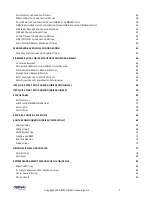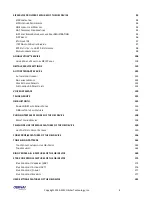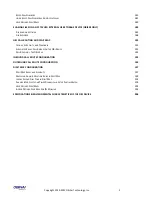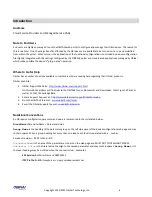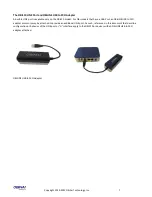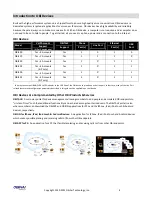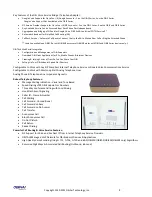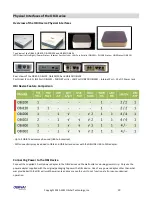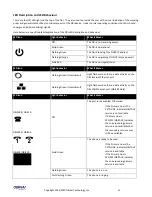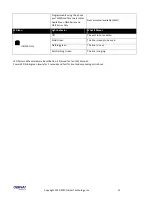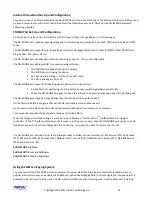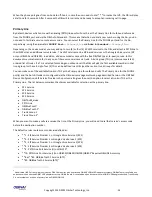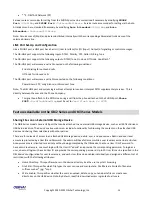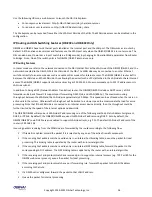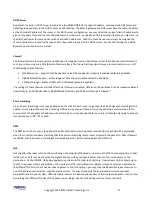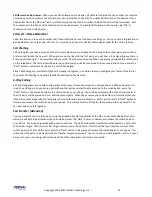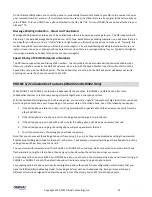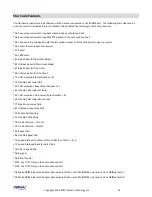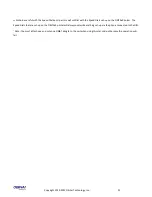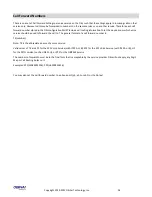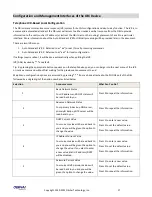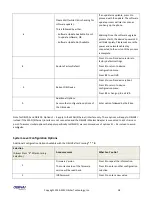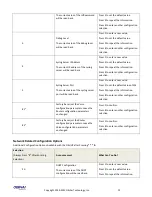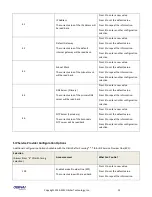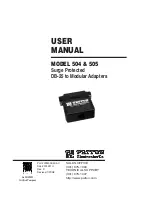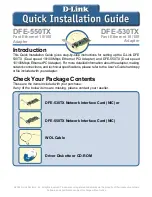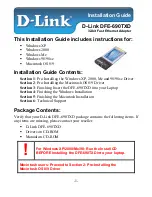
Copyright 2010-2013 Obihai Technology, Inc.
17
DHCP Server
By default, the built-in DHCP server is enabled on the OBi202/OBi302. It assigns IP address, network mask, DNS server and
default gateway address to the DHCP clients on the LAN side. The default gateway and DNS server have the same IP address
as the LAN side IP address of the router. In the DHCP server configuration, you may select the range of client IP addresses to
give out the Lease Time and the Local Domain Name. Furthermore, by using the DHCP reservation feature, you may reserve
specific IP addresses for some devices with specific MAC addresses. With this, those devices can always be assigned the
same IP addresses reserved for them each time they make a request to the DHCP server. See the LAN Settings and DHCP
Reservation sections for more details.
Firewall
The firewall protects local processes and LAN side clients against certain basic threats from the WAN side (or the Internet),
such as port scanning and a DOS (Denial of Service) attack. The firewall settings also allow you to selectively turn on or off
the following related features:
NATRedirection – Supports NAT Redirection (a.k.a NAT Loopback or Hairpin) if enabled (default is disabled).
DRDOSAttackProtection – Protects against DOS attack if enabled (default is disabled).
VPNPassThrough – Blocks all VPN traffic if disabled (default is enabled).
The settings of these features will take effect only if firewall is enabled. Otherwise, they will take on their respective default
values (that is, no NATRedirection or DRDOSAttackProtection and VPNPasssThrough is allowed).
Port Forwarding
Up to 20 port forwarding rules may be defined on the OBi. For each rule a range of ports and a designated receiving LAN IP
address must be specified such that incoming traffic arriving at any of those ports on the WAN side are forwarded to the
same port at the designated IP address on the LAN side. You may also specify for each rule if it should only apply to packets
transported over UDP, TCP or both.
DMZ
The DMZ host in the router is the default LAN client address to which a packet received from the WAN side is forwarded
when the router fails to find a matching LAN IP address or matching local process to forward the packet to. Note if firewall
is enabled, that the packet is still subject to firewall inspection before forwarding to the DMZ host.
QoS
QoS (Quality of Service) refers to the prioritization of network traffic based on the type of traffic. For example, time critical
traffic such as VoIP may be allocated the highest priority so they can have a better chance of on time delivery to the
destination. On the OBi202, QoS policy applies to upstream traffic (LAN-to-WAN) only. Downstream QoS is entirely up to
the ISP / upstream routers and switches. The upstream traffic is prioritized according to its type of service as indicated by
the DiffServ/TOS bits in the IP header of each packet. In the QoS settings, you may map the 64 possible types of service to
one of the three priority classes: High, Medium and Low. You may also specify the guaranteed minimum upstream
bandwidth for each priority class. LAN side clients indicate the desired priority class of their outbound packets to the router
by marking the DiffServ/TOS bits of their packets accordingly. See the QoS Settings section for more details.
Summary of Contents for OBi100
Page 54: ...Copyright 2010 2013 Obihai Technology Inc 54...
Page 55: ...Copyright 2010 2013 Obihai Technology Inc 55...
Page 58: ...Copyright 2010 2013 Obihai Technology Inc 58...
Page 75: ...Copyright 2010 2013 Obihai Technology Inc 75...
Page 100: ...Copyright 2010 2013 Obihai Technology Inc 100...
Page 109: ...Copyright 2010 2013 Obihai Technology Inc 109 SP1 SP2 SP3 and SP4 Services...
Page 126: ...Copyright 2010 2013 Obihai Technology Inc 126...
Page 135: ...Copyright 2010 2013 Obihai Technology Inc 135...
Page 140: ...Copyright 2010 2013 Obihai Technology Inc 140...
Page 157: ...Copyright 2010 2013 Obihai Technology Inc 157...
Page 158: ...Copyright 2010 2013 Obihai Technology Inc 158...
Page 159: ...Copyright 2010 2013 Obihai Technology Inc 159...
Page 174: ...Copyright 2010 2013 Obihai Technology Inc 174...
Page 185: ...Copyright 2010 2013 Obihai Technology Inc 185...

